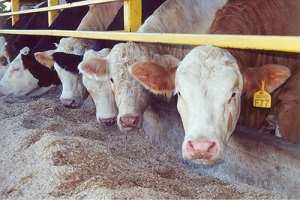The reality of operating under the Veterinary Feed Directive (VFD) being pursued by the Food & Drug Administration is beginning to sink in for producers as we near the first of the new year, when the rule takes effect. Brian Lubbers, D.V.M., Ph.D., Kansas State University Microbial Surveillance Lab director, spoke with Farm Director Ron Hays at The Samuel Roberts Noble Research Foundation this past July during an open forum to shed light on the VFD for producers and industry stakeholders.

Dr. Lubbers explains that the VFD came about over the last three to four years as part of a big picture strategy by the FDA in response to the antimicrobial resistance issue, particularly in humans, but has extended to the role of animal agriculture as well. The VFD consists more of revised regulations that already exist, rather than of new ones being implemented by the FDA meant to encourage the judicious use of antibiotics. He went on to explain that the VFD, specifically Guidance 209 and 213, can be boiled down to two main principles; the first being that when antimicrobials are used in food animals, it is because they are necessary for the animal’s health; and secondly, that a licensed veterinarian will be involved in that decision.
There is no question that VFD will affect the way producers manage their herds, but Dr. Lubbers assures that the key to streamlining the process is to prepare by establishing a working relationship with a veterinarian and familiarizing them with your operation, cattle and any disease challenges your herd may have so that they may fulfill VFD orders in the future.